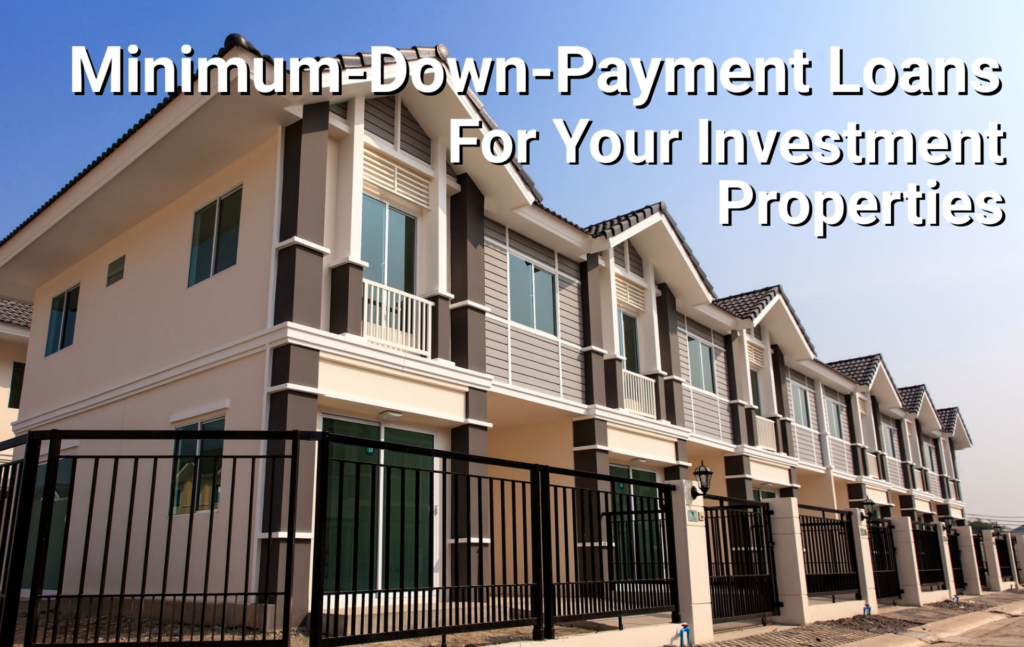How big of a down payment should you have before purchasing a home? That’s one of the fundamental questions for homebuyer, but if you are an investor, it might be even more important, as down payments make a direct impact on your available capital and financial flexibility.
Down payments remain an important part of mortgages on an investment property, but there are reasons to consider using a minimum-down-payment on your next investment-property loan.
San Diego Purchase Loans is proud to offer up to $2.5 million loan with only 15% down on investment properties. (Usually 20% is required.) This is a wonderful opportunity for investors, but first let’s take the time to understand why these loans might be right for you, as well as the potential risks associated with minimum down payments.
Advantages of a Minimum Down Payment
Conventional wisdom says you should always bring as large of a down payment as possible, but this may not be the case in all situations. We agree that for most people in most situations, having a down payment is generally the best idea, but there are times when sticking to a low down payment may be ideal, especially for investment properties.
So should you consider a minimum down payment loan on your next investment property? One of the main disadvantages for using a large down payment is that you may have to wait longer to make the investment, and when it comes to investments, time waisted is money lost. For example, if you need $10,000 for a down payment on an investment, you may have to wait a few years to purchase the property. Those three years you wait are three years that you don’t make money on a property; three years when your money is not working for you. Simply reducing the time to make an investment is motivation for many people to choose a low-down payment loan.
Even if you have the cash, making a low down payment could allow you to get the best results from your money. Let’s say that instead of using an extra $5,000 on a down payment, you instead choose to place that money in the financial market. Nothing is certain, and much will depend on the activity in the financial sector and the interest rate on your loan, but you could make more money investing the cash that you would save by using it as a down payment. Again, this is a fairly risky investment strategy, but many investors do subscribe to the theory that it’s better to use a low down payment and make investments instead. The money you don’t use could also be used on another property purchase, depending on how much money you have.
Simply holding the money could also be a wise strategy. If you are purchasing a property, it’s only a matter of time until that property needs repairs or remodeling. By holding on to the money, you give yourself a financial cushion that will help you deal with any surprise emergency repairs or other important issues. Having a cushion of cash could also reduce your worry, which for many investors is just as valuable as cash in the bank!

When you make a large down payment, more money is tied up in your property. This means you have less access to usable funding that could be used to improve your portfolio, make improvements to the property, or keep cash on hand as a financial cushion. That said, there are still fundamental reasons why you might want to avoid a minimum down-payment on your next investment property.
If you are a personal investor, using a large down payment could interrupt your retirement savings, so holding on to the money may be ideal. The same goes for someone who is saving for college, as a large down payment could eat up some of the money you could use for education, either for yourself or for your children.
Disadvantages of Minimum Down Payment
The biggest disadvantage to making a minimum down payment is that you will pay more in interest over the life of the loan. While this can be countered by utilizing investment strategies that come available, paying more in total interest (as well as a potentially higher interest rate) is often an inescapable fact of using a low down payment.
Depending on the investment loan you use, you may have to have mortgage insurance on the loan. This only adds to the total cost of borrowing money and could be the difference when calculating the rewards and expenses of a minimum-down-payment loan.
With a higher down payment, you will also have a lower monthly payment. This means that you could have more available capital coming in every month, as you won’t have to make larger payments on all of your bills.
Find a High-Quality Minimum-Down-Payment Loan from SDPL
When you work with our tremendous staff, you’ll be able to find the right loan for your specific needs. If you have a smaller down-payment on a larger investment property, we can help you find excellent terms on a high-quality loan.
For example, you can work with us to get a loan amount up to $2,500,000 with only a 15% down payment. In most cases, you would need a 20% down payment or larger in order to secure a loan of this size, but this option opens new opportunities for investors who don’t want to burden their cash savings. This loan product is available for properties with one to four units, which can include condos and planned unit developments (PUDs). The terms are either 30-year or 40-year, giving you flexibility for repayment, and there are fixed-rate or adjustable-rate mortgages on these loans. As you can see, this is a flexible and reliable investment option when you need a low-down-payment loan on a top-quality investment property.
Contact our staff today and we’ll help guide you to the best investment-property loan for your exact needs.


